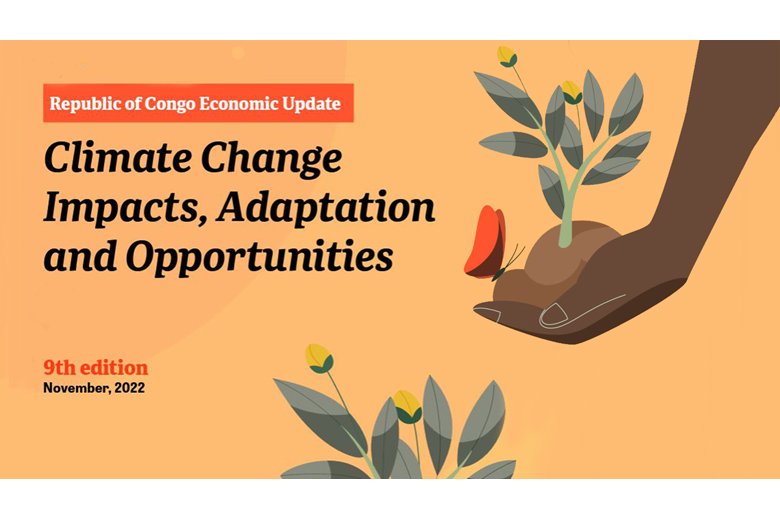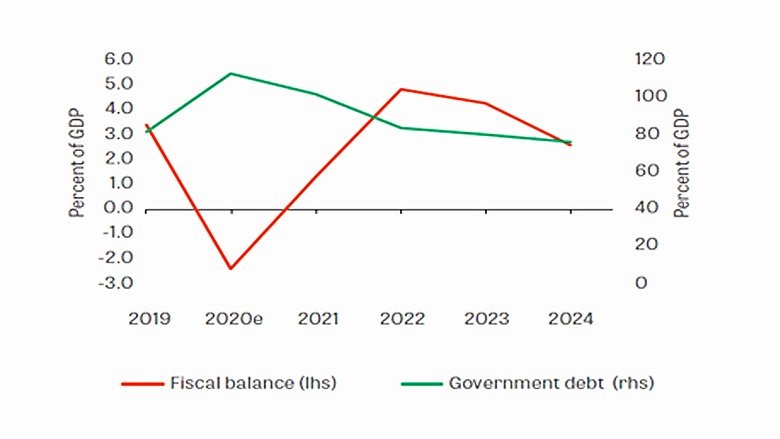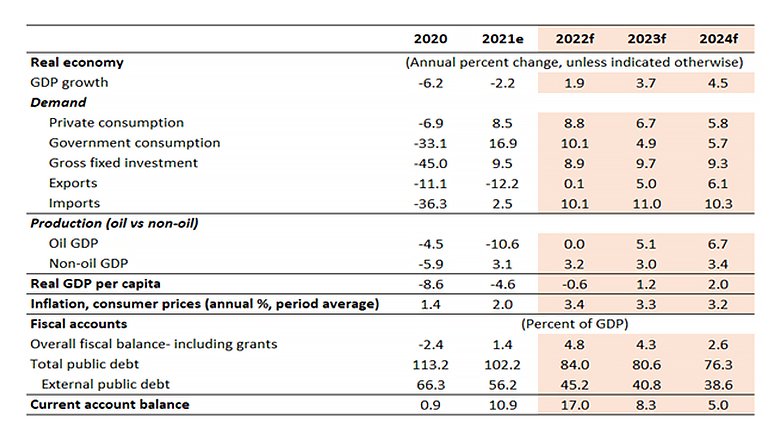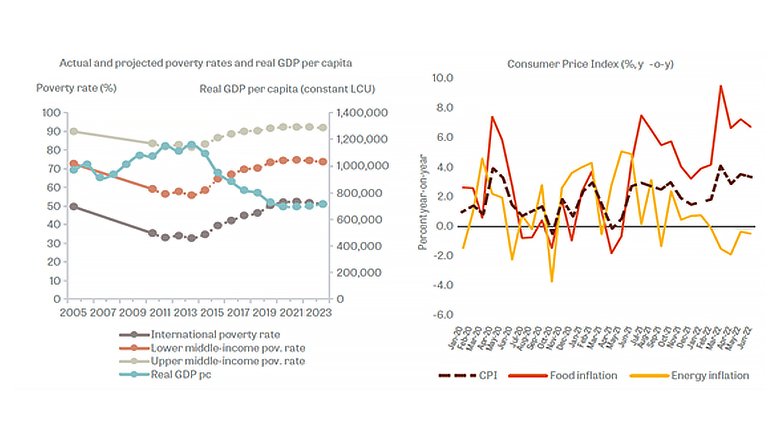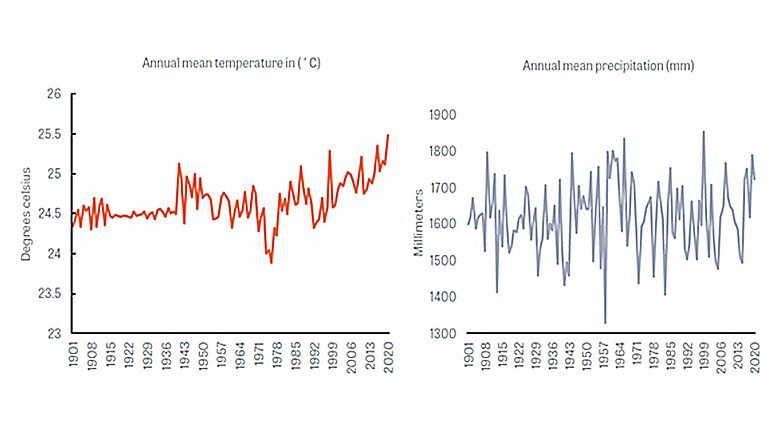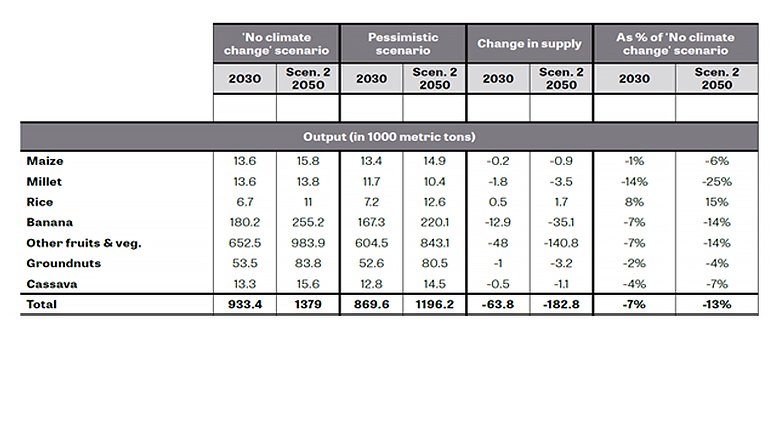BRAZZAVILLE, February 02, 2023 – The World Bank issued today the Ninth Economic Update for the Republic of Congo: Climate Change Impacts, Adaptation and Opportunities. Here are some highlights from the report:
1. Impacts of the Ukraine war on Congo’s economy
As a commodity exporter, the Republic of Congo is currently benefiting from higher oil prices, induced largely by the war in Ukraine. Export receipts have increased significantly, bolstering government revenues. However, households and businesses are being negatively impacted by rising food prices, supply chain disruptions and fuel shortages. In addition, Congo’s subsidy bill surged in 2022, especially oil and electricity subsidies, as the Government maintains administrative controls on the prices of a wide array of consumer necessities (e.g., gasoline, electricity tariffs, and several food staples). These effects of the war in Ukraine add to existing socio-economic challenges and to the effects of the COVID-19 pandemic.
Congo’s fiscal balance and debt, % of GDP
2. Economic rebound ahead
Congo’s economy returned to growth in 2022, following a contraction of 2.2% in 2021. Growth in 2022 is estimated at 1.9% driven by the non-oil sector, which expanded thanks to the removal of COVID-19 restrictions and partial clearance of government arrears to domestic firms. The non-oil sector is set to continue to expand in 2023-24, and the resumption of investments by oil companies will spur growth in the oil sector. Overall growth is projected to firm up to 3.7% in 2023 and 4.5% in 2024. However, there are several downside risks to the outlook, including uncertainties related to oil production, a protracted war in Ukraine and sustained high food prices, as well as adverse weather conditions which could impact agricultural production.
Key economic indicators of the Congolese economy
3. Poverty on the rise
The return to growth last year was preceded by several years of economic contraction, reversing previous progress on poverty reduction in Congo. As a result, the poverty rate (using the international poverty line of $2.15 a day) reached 52% in 2021, from a low of 33% in 2014. In addition, the poor are being impacted by rising food prices, as a result of pandemic-induced disruptions in global supply chains. The war in Ukraine is exacerbating existing supply chain issues and has led to shortages which are further increasing food prices.
Poverty rates have continued to rise, and food prices are also increasing
4. Huge risks from Climate Change
The Economic update report analyzes the impact of climate change in Congo and proposes mitigation and adaptation measures, with a focus on the agriculture sector given the sector’s vulnerability to climate change, its critical role for food security and economic diversification, and its relevance to the National Development Plan 2022-26. The report notes Congo’s high vulnerability to climate change. In the past decade, the country’s mean temperatures have increased, and precipitation has been more erratic. The impact on the welfare of Congo’s people is already being seen in the form of more frequent floods, a slowdown in agricultural productivity growth, and a higher incidence of heat-related and vector-borne illnesses, such as malaria.
The average temperature in Congo has increased but precipitation has shown little trend
5. Protecting people and building resilience against climate risks
The report recommends actions in the following four priority areas to enhance the country’s resilience against a hotter, wetter, and less predictable climate in the future:
- Agriculture: A key driver of adaptation in agriculture should be to strengthen food security. Farmers, especially smaller and more vulnerable ones, will need information about the impact on crop yields of changing patterns of temperature and precipitation as well as access to more resilient seed varieties. Assistance will be most important in the subsectors most affected: livestock and fruits and vegetables. The promotion of climate smart agriculture can increase productivity, enhance resilience, reduce emissions, and raise rural incomes, while reducing deforestation, greenhouse gas (GHG) emissions and preserving biodiversity.
- Labor productivity: A third of Congo’s workforce is employed in the agriculture sector. With climate change projected to cause substantial loss in agricultural output, this would result in a decline in rural incomes and increase in poverty. Actions to address the problem include changes in working hours, longer breaks, and use of heat protective equipment.
- Health: Congo is vulnerable to diseases that are influenced by climatic factors. Most notably, malaria is a big concern for the country as it is the leading cause of child and adolescent mortality and accounts for about 40% of health expenditures. A measure that has proved successful in reducing mortality from heatwaves is an early warning system. Investments in clean water and to control mosquitoes (e.g. bed nets, residual spraying, prompt treatment of diagnosed patients and mosquito repellent sprays and coils) are also needed.
- Coastal areas: The country’s coastal areas are already at risk from rising sea levels and storm surges. Congo could prepare and implement a detailed plan for coastal protection. Nature-based solutions, when well-designed and implemented, can generate large economic returns. Such solutions should be seen as part of structural transformation of the coastal zones in response to sea level rise and coastal ecosystem transformation driven by climate change.
6. Contributing to global efforts to reduce GHG emissions
In addition to building resilience against climate change, Congo should continue to contribute to global efforts to reduce GHG emissions while exploring financing opportunities, including by:
- Carefully managing development of forests and protection of portion of the Congo peatlands to provide opportunities for international carbon credits and ensure preservation of the country’s biodiversity.
- Reducing flaring and venting of associated gases by enforcing the October 2022 decree regulating gas flaring and venting in upstream activities of the hydrocarbon sector.
Climate induced changes in quantity for selected commodities
